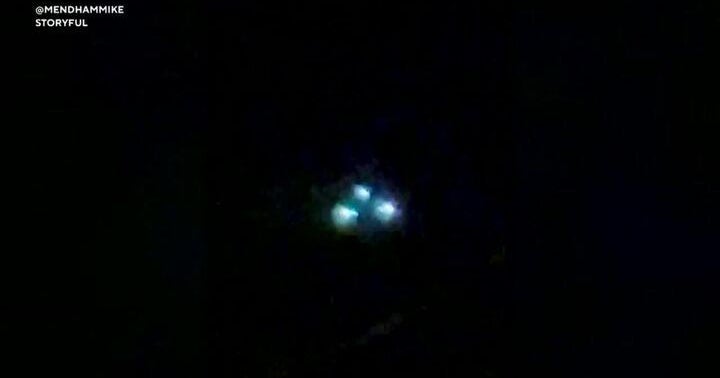FAA bars U.S. airlines from Iranian airspace over Strait of Hormuz and Gulf of Oman after drone shot down
Dubai, United Arab Emirates -- The U.S. on Friday barred American-registered aircraft from flying over Iranian-administered airspace in the Persian Gulf and the Gulf of Oman. The move, in reaction to Iran's Revolutionary Guard shooting down a U.S. military surveillance drone, affects a region crucial to global air travel.
The Federal Aviation Administration warned of a "potential for miscalculation or misidentification" in the region after an Iranian surface-to-air missile on Thursday brought down a U.S. Navy RQ-4A Global Hawk, an unmanned aircraft with a wingspan larger than a Boeing 737 jetliner and costing over $100 million.
U.S. officials have confirmed to CBS News that President Trump ordered limited strikes on Iran in response, but then called them off at the 11th hour on Thursday evening for unknown reasons.
The FAA previously warned of a risk in the region, but Friday's warning threw into stark relief a danger both it and analysts warned was real after the shooting down of a Malaysia Airlines flight over Ukraine in 2014. That could further imperil the bottom lines of Gulf long-haul carriers, which already have faced challenges under the Trump administration.
"The threat of a civil aircraft shoot-down in southern Iran is real," warned OPSGROUP, a company that provides guidance to global airlines.
The FAA made a similar warning in May to commercial airliners of the possibility of Iranian anti-aircraft gunners mistaking them for military aircraft, something dismissed by Tehran.
Iran had no immediate reaction to the U.S. announcement.
The FAA said its warning would affect the area of the Tehran Flight Information Region, without elaborating. The FAA's operations center referred questions to its press office, which did not immediately respond to queries from The Associated Press. However, that likely only extends some 12 miles off of the Iranian coast, aviation experts said.
There are "heightened military activities and increased political tensions in the region, which present an inadvertent risk to U.S. civil aviation operations and potential for miscalculation or misidentification," the FAA said. "The risk to U.S. civil aviation is demonstrated by the Iranian surface-to-air missile shoot-down of a U.S. unmanned aircraft system on 19 June 2019 while it was operating in the vicinity of civil air routes above the Gulf of Oman."
The Persian Gulf is home to some of the world's top long-haul carriers, which already have been battered by Trump's travel bans targeting a group of predominantly Muslim countries, as well as an earlier ban on laptops in airplane cabins for Mideast carriers. The major carriers, Etihad, Emirates and Qatar Airways, as well as low-cost carriers, did not immediately announce any route changes.
Etihad later said in a statement that it was "carefully monitoring the current situation," adding that it had "contingency plans" in place and it would make a decision about any further action "after carefully evaluating the FAA directive to U.S. carriers."
While those carriers are not barred under the FAA restriction, which only affects U.S. airlines, they may opt to follow the American aviation agency's lead -- or risk worried passengers choosing to fly with other carriers. A significant number of the Gulf carriers' flights would have to be rerouted to avoid Iranian administered airspace.
A number of non-U.S. airlines said Friday that they would avoid Iranian airspace over the Strait and the Gulf of Oman in light of the FAA warning. The Air France-KLM group said Friday that its Dutch subsidiary would reroute flights, along with Australian carrier Qantas, Germany's Lufthansa, British Airways and a couple major Japanese carriers.
Iran insists the U.S. drone "violated" its territorial airspace, while the U.S. called the missile fire "an unprovoked attack" in international airspace over the Strait of Hormuz, the narrow mouth of the Persian Gulf. OPSGROUP said the Iranian weapons system that shot down the drone was comparable to the Russian Buk system used in the 2014 Malaysia Airlines shootdown in Ukraine.
"Any error in that system could cause it to find another target nearby - another reason not to be anywhere near this part of the Straits of Hormuz," OPSGROUP said.
President Donald Trump initially tweeted that "Iran made a very big mistake!" He later appeared to play down the incident, telling reporters in the Oval Office that he had a feeling "a general or somebody" being "loose and stupid" made a mistake in shooting down the drone.
The incident immediately heightened the crisis already gripping the wider region, which is rooted in Trump withdrawing the U.S. a year ago from Iran's 2015 nuclear deal and imposing crippling new sanctions on Tehran. Recently, Iran quadrupled its production of low-enriched uranium to be on pace to break one of the deal's terms by next week, while threatening to raise enrichment closer to weapons-grade levels on July 7 if Europe doesn't offer it a new deal.
Citing unspecified Iranian threats, the U.S. has sent an aircraft carrier to the Middle East and deployed additional troops alongside the tens of thousands already there. All this has raised fears that a miscalculation or further rise in tensions could push the U.S. and Iran into an open conflict, 40 years after Tehran's Islamic Revolution.
"We do not have any intention for war with any country, but we are fully ready for war," Revolutionary Guard commander Gen. Hossein Salami said in a televised address Thursday.





